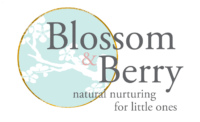Working with babies with colic or unsettled babies with colic or baby’s prone to overstimulation may appear tense, difficult to console and cry excessively. It is important to reassure parents that in the majority of cases this is a temporary situation that subsides as the baby develops.
Our Colic Massage Workshop or Soothe, Settle and Sleep Program is designed to help babies who are in discomfort and who can benefit from soothing techniques.
Colic – It is a good idea to understand what is meant by colic, what the symptoms are, the causes and ways to help ease the condition.
Coping with Crying – All babies cry. It is their language, a way of communicating their needs and ultimately it is the result of a baby’s instinct to survive. Young babies who have little ability to move, feed themselves, keep themselves warm or protect themselves from danger rely solely on their parents or carers to protect and look after them. Babies have the ability to cry so that their needs are met and they can survive into adulthood. All babies are different when it comes to crying. Some babies are calm and contented and only seem to cry when they are hungry or tired. Others seem to cry constantly and are difficult to settle. The amount that a baby cries will also vary from day to day and month to month.
So why do babies cry? – The answer is not always obvious and can lead to parents becoming stressed and frustrated in the early days of parenthood. It is important to understand why babies cry so that parents can respond to their babies’ needs quickly and recognise why their baby may be crying. The reasons babies cry can be divided into three main categories;
Physical Needs – Such as hunger, temperature, shelter, sleep, fresh air, activity, overstimulation, protection from injury or danger, colic.
Emotional Needs – These include love, security, the need for comfort and touch, loneliness, fear, confusion, reassurance.
Developmental Stages – Babies may cry more when they are reaching developmental goals such as teething, crawling, walking. A baby may have different cries to communicate these different needs.
As a parent becomes more familiar with their baby they will learn to recognise these different cries which will help the parent and the baby to communicate more effectively with each other.
Attitudes to crying – Attitudes to babies crying have changed dramatically over the last hundred years. In the early part of the 20th century, the attitude of many households was that children were to be integrated into the household as soon as possible with little fuss and attention and babies were not recognised as having needs. Breastfeeding was not encouraged in the way it is today and parenting styles were very different. In the 1970s there was a complete swing in attitudes with many parenting manuals suggesting that babies sleep in the same bed as the parents and breastfeeding became more widespread and accepted in public. Today attitudes to crying vary from person to person. Often as a parent, your attitude to crying may be influenced by the values and parenting traditions in your family. There still exists the concept of “spoiling a baby” by responding too quickly to its needs and by giving a baby too much attention. Desmond Wilcox comments on this in his book “Baby Watching”(1991);
Techniques to help with crying – Parents are particularly sensitive to the sound of their baby crying and persistent crying can lead to parents feeling exhausted and depressed. Parents may feel guilty at not being able to meet their baby’s needs or worried that there is something wrong with the baby. One important way to cope with crying is to listen to a baby’s cries. By listening to the cry parents can try and identify why their baby is crying. It is helpful to think of how a parent would respond to an adult crying or upset when responding to their baby crying. If a friend is crying you may offer them comfort by giving them a hug or holding their hand. You may ask the adult to tell you why they are crying. By taking a similar attitude when a baby cries rather than just applying a practical solution such as providing a feed or nappy change you can communicate more effectively with a baby. A baby may just be looking for comfort and reassurance from the parent rather than anything else. Babies respond very positively to touch. Holding a baby when a baby is crying will help to calm the baby down. The baby has been used to skin to skin contact whilst in the womb. Skin to skin contact outside the womb can help to quickly reassure the baby that he/she is fine and in no danger. Dimming lights and keeping noise to a minimum will also help to reassure a baby. Gentle rocking either in a parent’s arms or sling or pram can help to recreate the gentle swinging movements of the mother’s body when the baby was in the womb. Massage can help to soothe crying babies because it releases relaxing and “feel good” hormones but more importantly, it communicates love and helps to build a confident relationship of trust and love between the parent and child which may make the baby feel more secure with his/her surroundings. Baby massage gives the parent the opportunity to observe and learn more about their baby’s signs and cues which helps the parent respond to their baby’s needs more effectively.
Blossom & Berry’s mission is to grow babies with love, touch, responsive care and positive interaction. We create nurturing experiences for parents and babies to deepen connection and confidence. We focus on touch as a way to support infant and maternal mental health as we believe this is the foundation for health and happiness. Blossom & Berry was born out of love!
If you would like to train with us click here.
About Blossom & Berry
Blossom & Berry offers expert training, support & resources on baby massage, yoga and parent and baby wellness for professionals & parents across the world.
Blossom & Berry training is designed to give you everything you need to succeed. It gives you a complete teaching practice and mentorship program in a box.
Our training is the most comprehensive teacher training and business package on the market with no restrictions on what you can do and no ongoing licence fees ever.
“I would love to invite you to join my network of over 1000 teachers across the world sharing the benefits of nurturing touch and connection with parents and babies.”
Gayle Berry – Master trainer and international expert on baby massage and yoga, founder of Blossom & Berry.
Your success is our success and having a transformational and nurturing experience is key.


